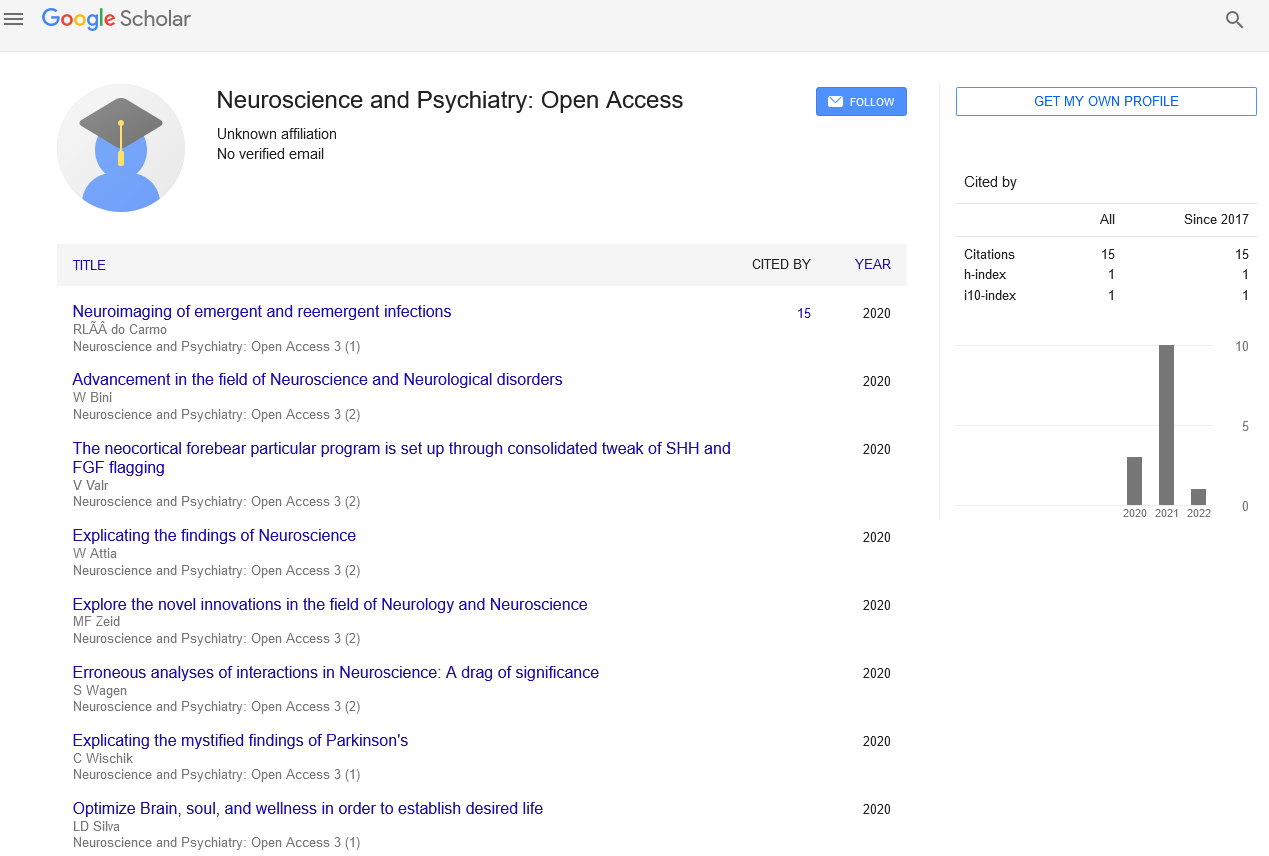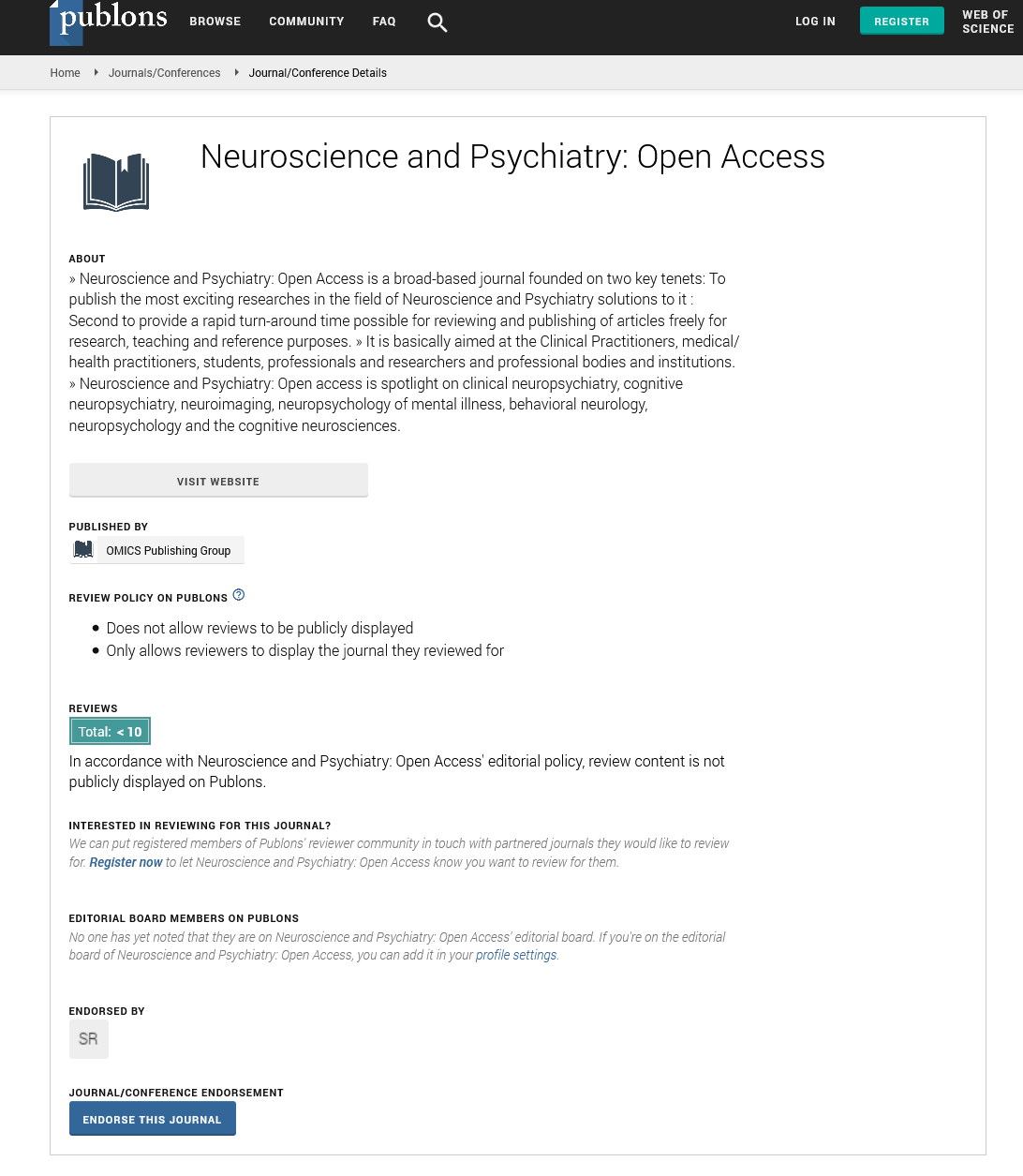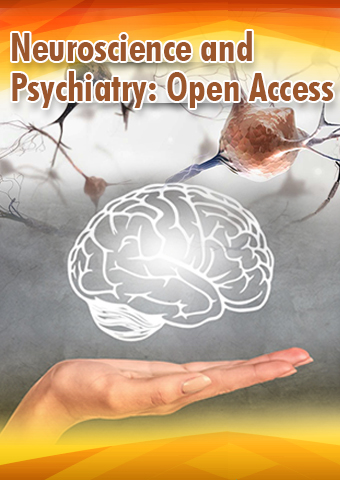Editorial - Neuroscience and Psychiatry: Open Access (2023) Volume 6, Issue 3
Unleashing the Extraordinary Potential of the Brain's Adaptive Rewiring Mechanisms for Lifelong Development, Cognitive Enhancement, and Personal Transformation: Unlocking the Power of Neuroplasticity
Kerry Komine*
College of Engineering Science, University of Japan ,biology department
College of Engineering Science, University of Japan ,biology department
E-mail: kerryk@gmail.co.in.edu
Received: 02-06-2023, Manuscript No. npoa-23-102006; Editor assigned: 05-06-2023, Pre QC No. npoa-23- 102006; Reviewed: 19-06-2023, QC No. npoa-23-102006; Revised: 23-06-2023, Manuscript No. npoa-23- 102006 (R); Published: 30-06-2023; DOI: 10.37532/npoa.2023.6(3).68-70
Abstract
The concept of neuroplasticity has transformed our understanding of the brain's capacity to adapt, grow, and change throughout our lives. Neuroplasticity refers to the brain's remarkable ability to rewire itself, forming new neural connections and reorganizing existing ones in response to experiences, learning, and environmental changes. This article explores the fascinating world of neuroplasticity and its implications for lifelong development, cognitive enhancement, and personal transformation. By unlocking the power of neuroplasticity, individuals can tap into their brain's extraordinary potential to cultivate new skills, recover from brain injuries, and foster personal growth and transformation. We delve into the mechanisms of neuroplasticity, its impact on learning and recovery, and strategies for harnessing its power. By embracing the principles of neuroplasticity, individuals can embark on a journey of lifelong development, maximizing their cognitive abilities, and unlocking new levels of personal and professional achievement.
Keywords
Neuroplasticity • Brain rewiring • Lifelong development • Cognitive enhancement • Personal transformation • Adaptive mechanisms • Brain plasticity • Learning and memory • Brain injury recovery• Neural connections • Cognitive flexibility • Brain rehabilitation
Introduction
The human brain has long been regarded as a mysterious and complex organ, capable of extraordinary feats. Traditionally, it was believed that the brain's structure and function were fixed and immutable after a certain age, leading to the notion that one's cognitive abilities and personal development were limited by predetermined factors [1]. However, recent scientific discoveries in the field of neuroscience have shattered this notion, revealing the remarkable power of neuroplasticity—the brain's ability to adapt, rewire, and transform itself throughout a person's entire lifespan [2]. Neuroplasticity refers to the brain's ability to form new neural connections, reorganize existing ones, and adjust its structure and function in response to experiences, learning, and environmental changes [3]. It is a process of continuous adaptation and rewiring that enables the brain to learn new skills, recover from injuries, and facilitate personal growth and transformation [4]. This groundbreaking concept has revolutionized our understanding of the brain's potential, offering new avenues for lifelong development, cognitive enhancement, and personal transformation [5]. In this article, we embark on a journey into the realm of neuroplasticity, exploring its extraordinary potential and the profound implications it holds for human beings [6]. We delve into the mechanisms underlying neuroplasticity, examining how the brain adapts and rewires itself in response to various stimuli and experiences. By understanding the intricate workings of neuroplasticity, we gain insight into how we can unlock the full potential of our brains and optimize our cognitive abilities. Moreover, we explore the role of neuroplasticity in lifelong development, highlighting how it allows us to continuously learn, grow, and acquire new skills throughout our lives [7]. We examine the impact of neuroplasticity on cognitive enhancement, shedding light on how we can leverage this phenomenon to boost our cognitive functions, improve memory, and enhance our overall cognitive performance. Additionally, we investigate the role of neuroplasticity in personal transformation, recognizing that our brains have the capacity to change and adapt not only in terms of cognitive abilities but also in terms of behaviors, attitudes, and emotional well-being [8]. We explore how neuroplasticity can facilitate personal growth, resilience, and the development of new habits and patterns of thinking. Furthermore, we delve into the implications of neuroplasticity for brain injury recovery, recognizing that the brain has an incredible ability to rewire itself and compensate for damage [9]. We explore how rehabilitation programs harness the power of neuroplasticity to promote functional recovery, enabling individuals to regain lost abilities and improve their quality of life. By unraveling the mysteries of neuroplasticity, we uncover the vast potential that lies within each of us. We realize that our brains are not fixed entities, but dynamic and adaptive organs, capable of continuous growth and change. Through a deeper understanding of neuroplasticity, we can embrace strategies and practices that harness its power, paving the way for lifelong development, cognitive enhancement, and personal transformation [10]. So, let us embark on this journey into the incredible world of neuroplasticity and unlock the true potential of our brains.
Materials and Methods
Studying and harnessing the power of neuroplasticity requires a multidisciplinary approach, combining various research methods and techniques. In this section, we outline the materials and methods commonly employed in the investigation of neuroplasticity and its applications for lifelong development, cognitive enhancement, and personal transformation.
Neuroplasticity and learning: One of the most exciting implications of neuroplasticity is its role in learning. It highlights that the brain is not a static entity but a dynamic organ capable of constant growth and adaptation. When we learn something new, whether it's a new language, a musical instrument, or a new skill, the brain forms new neural pathways and strengthens existing connections. These changes enable us to acquire and consolidate knowledge more effectively. Moreover, the more we practice and repeat a particular activity, the stronger the corresponding neural pathways become, making it easier and more automatic over time. This phenomenon is known as Hebbian plasticity, often summarized as "neurons that fire together wire together.
Neuroplasticity and brain injury: Neuroplasticity plays a crucial role in the recovery of individuals who have experienced brain injuries. Previously, it was thought that the brain damage caused by strokes or accidents was permanent, leaving the affected individuals with little hope for rehabilitation. However, studies have shown that the brain can reorganize itself and compensate for the lost functions through neuroplasticity. By engaging in targeted rehabilitation programs and therapies, individuals can stimulate neural reorganization and promote functional recovery.
Harnessing the power of neuroplasticity
The knowledge of neuroplasticity has opened up new possibilities for enhancing brain function and optimizing personal growth. Here are some strategies to harness the power of neuroplasticity:
Lifelong learning: Engage in continuous learning and intellectual stimulation. Take up new hobbies, learn new skills, and challenge your brain regularly. This stimulates the formation of new neural connections and promotes cognitive flexibility.
Physical exercise: Regular physical exercise has been shown to enhance neuroplasticity. Aerobic exercises, in particular, have a positive impact on brain health by increasing the production of growth factors that support the formation of new neurons and connections.
Mindfulness and meditation: Mindfulness practices, such as meditation, can induce structural and functional changes in the brain. Studies have demonstrated that regular meditation can increase cortical thickness, strengthen neural connections, and improve attention and emotional regulation.
Conclusion
The discovery of neuroplasticity has revolutionized our understanding of the brain's remarkable capacity to adapt, rewire, and transform itself throughout our lives. The brain's ability to form new neural connections, reorganize existing ones, and adjust its structure and function in response to experiences and learning is a phenomenon of extraordinary potential. In this article, we have explored the profound implications of neuroplasticity for lifelong development, cognitive enhancement, and personal transformation. By embracing the power of neuroplasticity, individuals can embark on a journey of continuous growth and self-improvement. Lifelong learning becomes an essential tool for stimulating neuroplastic changes, enabling us to acquire new skills, expand our knowledge, and improve cognitive abilities. Through deliberate practice and repetition, we can strengthen neural pathways and make learning more efficient and automatic. Neuroplasticity also holds tremendous promise for individuals recovering from brain injuries. Rehabilitation programs that harness the brain's adaptive rewiring mechanisms can facilitate functional recovery and improve quality of life. By engaging in targeted therapies and exercises, individuals can stimulate the brain's plasticity, encouraging the formation of new connections and the transfer of functions to undamaged areas.Moreover, the power of neuroplasticity extends beyond cognitive enhancement and recovery from injury. It offers the potential for personal transformation, enabling individuals to reshape their behaviors, attitudes, and emotional well-being. By intentionally rewiring thought patterns, cultivating positive habits, and practicing mindfulness, individuals can restructure their brain's neural networks, leading to enhanced resilience, emotional regulation, and personal growth.
References
- McGue, Matt, Bacon et al. Personality stability and change in early adulthood: A behavioral genetic analysis. Dev Psychol. 29,96-109 (1993).
- Perdiguero E. Anthropology in public health Bridging differences in culture and society. J Epidemiol Community Health. 55,528b-528 (2001).
- Escosura, Leandro Prados. Augmented human development in the age of globalization. Econ Hist Rev. 74, 946-975 (2021).
- Sanders, Buchner, Tchounwou et al. Neurotoxic effects and biomarkers of lead exposure. Rev Environ Health. 24, 15-45 (2009).
- Caramés B, Olmer M, Kiosses WB et al. The relationship of autophagy defects to cartilage damage during joint aging in a mouse model. Arthritis Rheumatol. 67, 1568-76(2015).
- Gary FA. Stigma: barrier to mental health care among ethnic minorities. Issues Ment Health Nurs. 26,979-999 (2005).
- Brodland, G. Wayne. How computational models can help unlock biological systems. Semin Cell Dev Biol. 47,62-73 (2015).
- Li Y, Peppelenbosch MP. Hepatitis E virus and neurological manifestations. J Neurol Sci. 423, 117-388 (2020).
- Kobayashi S. Choose Delicately and Reuse Adequately: The Newly Revealed Process of Autophagy. Biol Pharm Bull. 38, 1098-103 (2015).
- Phelan, Jo C, Link et al. Public Conceptions of Mental Illness in 1950 and 1996: What Is Mental Illness and Is It to be Feared?. J Health Soc Behav. 41,188-207(2000).
Indexed at, Google Scholar, Crossref
Indexed at, Google Scholar, Crossref
Indexed at, Google Scholar, Crossref
Indexed at, Google Scholar, Crossref
Indexed at, Google Scholar, Crossref
Indexed at, Google Scholar, Crossref
Indexed at, Google Scholar, Crossref


